Coyotes
Sinixt mythology tells us that it was Coyote who brought the salmon up the Columbia River and into the Kootenay waterways each year. On one occasion, when he came upstream and reached the Sinixt people, he asked for a wife in trade for the salmon, but the Sinixt refused. So, Coyote placed a barrier across the river to prevent the salmon from entering Kootenay Lake; that barrier is now called Bonnington Falls, and the migrating salmon no longer can reach the Lake.
Who knows how such a story might have arisen? We know from the writings of David Thompson (early nineteenth century) that prior to European settlement, coyotes, while known, were uncommon in what we now call southeaster BC. It may be that they were mainly to be seen following (and preying upon) the salmon, and the relationship between the two species became reversed in the minds of the Sinixt: rather than the salmon bringing the coyote, it was believed that the coyote brought the salmon.
Be that as it may, two things are clear: following settlement, the coyote become more abundant; the Lake is home to Kokanee, a sockeye salmon which became landlocked as a result of the barrier.
Coyotes are easily confused with, and compete for territory with, their larger cousin, the Grey Wolf. However, size is difficult to judge when only one species is seen from a distance. The tail sometimes provides a clue: wolfs carry theirs straight back when running, while coyotes carry theirs low. The wolfe’s ears and snout are both more rounded while the coyote’s are more pointed. The colour of the coyote’s pelt varies from grayish brown to a yellowish gray on the upper parts; examples of both are seen below.
Owing to its small size, the coyote usually preys upon even smaller animals: mice, voles, ground squirrels, birds and hares. Further, they usually are solitary hunters, unlike the wolf which often hunts in packs.
 The pointed ears and snout of the Coyote are clearly evident.
The pointed ears and snout of the Coyote are clearly evident.  Doug Thorburn
Doug Thorburn
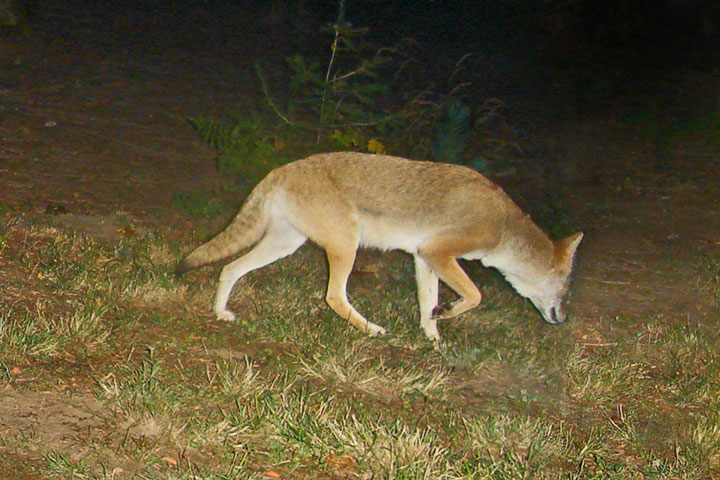 This Coyote has a yellowish coat. Whether this is a result of local variation within the species or is a seasonal thing (as it is with White-tailed Deer), I don’t know. Coyote are not nearly as frequent visitors as are the White-tailed Deer: I see one maybe once a month; this one visited early in September.
This Coyote has a yellowish coat. Whether this is a result of local variation within the species or is a seasonal thing (as it is with White-tailed Deer), I don’t know. Coyote are not nearly as frequent visitors as are the White-tailed Deer: I see one maybe once a month; this one visited early in September.
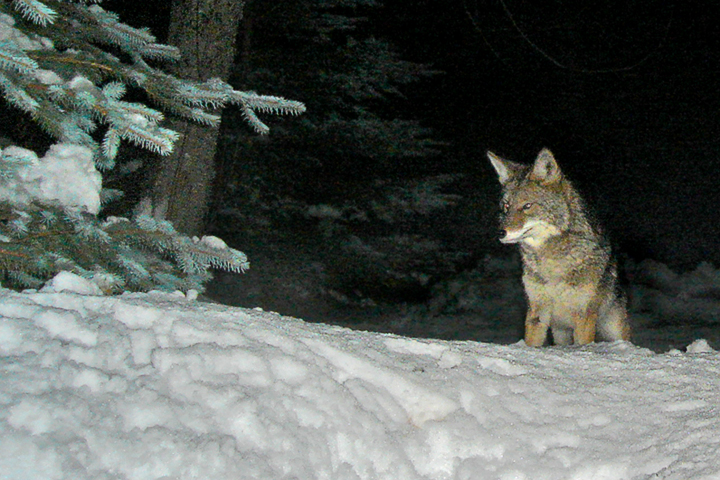 This Coyote came by very early Christmas morning—apparently it isn’t just children who take an interest in the arrival of reindeer.
This Coyote came by very early Christmas morning—apparently it isn’t just children who take an interest in the arrival of reindeer.
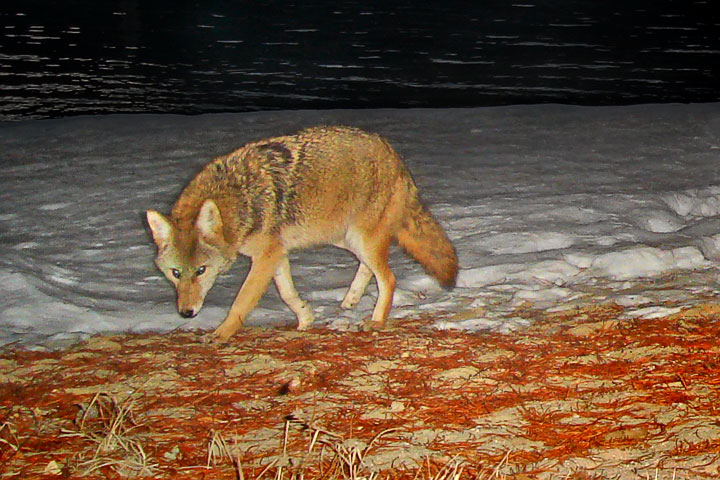
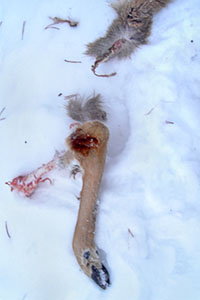 This is one of two coyotes which were prowling the lakeshore on a late January evening.
This is one of two coyotes which were prowling the lakeshore on a late January evening.
The next morning I found scraps of deer fir and the bottom of a leg (insert right) on the snow within meters of where the coyote picture was taken.
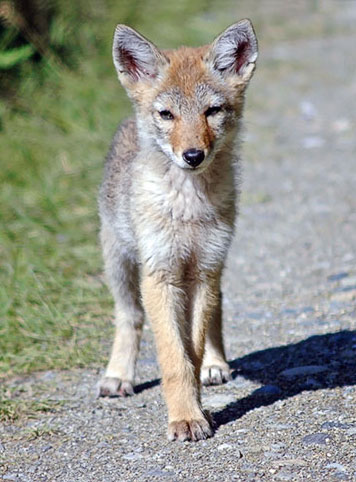 Unlike the adults whose heads are held low as they hunt, this Coyote pup looks as though it is just exploring its world.
Unlike the adults whose heads are held low as they hunt, this Coyote pup looks as though it is just exploring its world.  LVD
LVD
 This late March visitor is rooting around on the forest floor near the lakeshore, but soon it will probably head into the mountains.
This late March visitor is rooting around on the forest floor near the lakeshore, but soon it will probably head into the mountains.
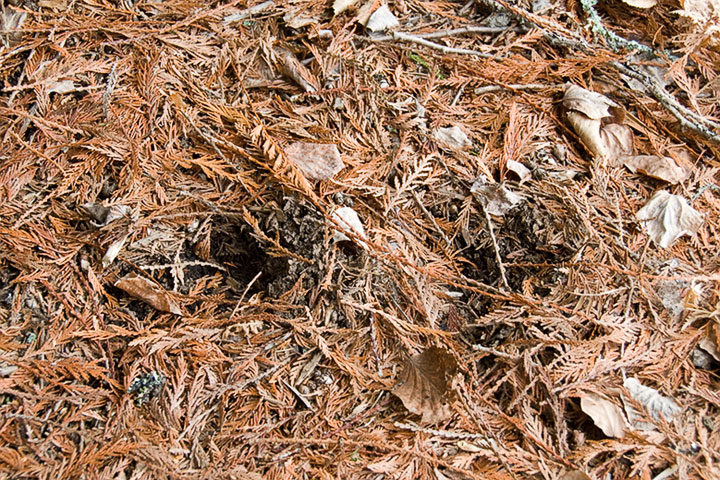 What, I wondered, are those strange prints in the forest floor? They show no paw or hoof marks and, unlike tracks, are distributed irregularly. They are small clearings made by the muzzle of a coyote as it sniffs around for delicacies within the debris. The picture shows two separate muzzle prints.
What, I wondered, are those strange prints in the forest floor? They show no paw or hoof marks and, unlike tracks, are distributed irregularly. They are small clearings made by the muzzle of a coyote as it sniffs around for delicacies within the debris. The picture shows two separate muzzle prints.
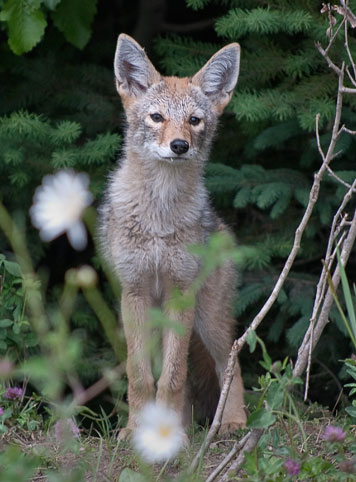 A coyote pup at the north end of the Lake.
A coyote pup at the north end of the Lake.  Rob Dulmage
Rob Dulmage
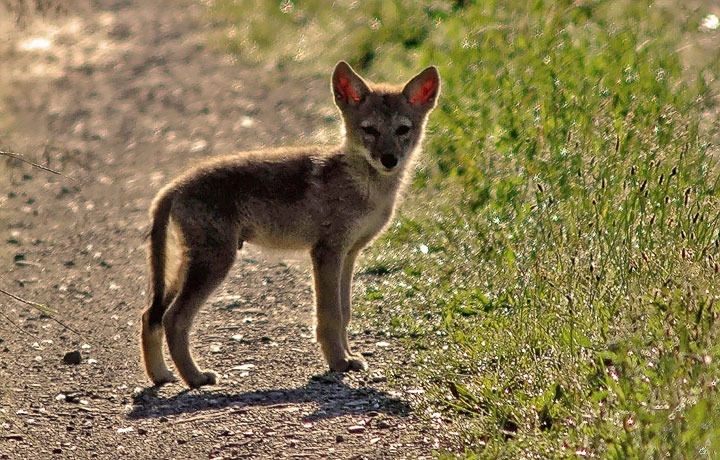 It is June, and a Coyote pup pauses to stare at something new: a photographer.
It is June, and a Coyote pup pauses to stare at something new: a photographer.  LVD
LVD
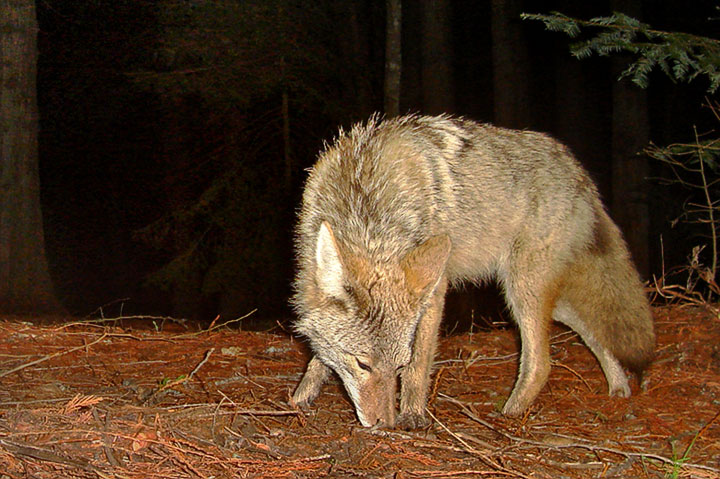 I am beginning to suspect that having its muzzle in the forest debris is a normal posture for the coyote.
I am beginning to suspect that having its muzzle in the forest debris is a normal posture for the coyote.
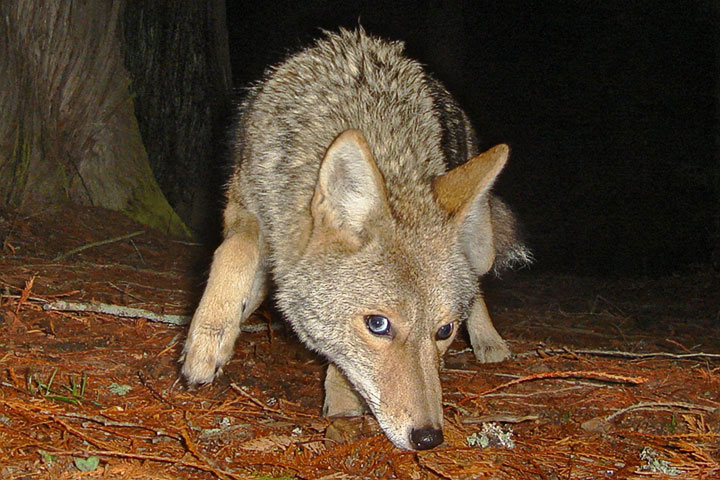 A coyote often roots around in debris, sometimes leaving muzzle–sized clearings haphazardly spread across the forest floor. The white tail tip of this lad is discussed below.
A coyote often roots around in debris, sometimes leaving muzzle–sized clearings haphazardly spread across the forest floor. The white tail tip of this lad is discussed below.
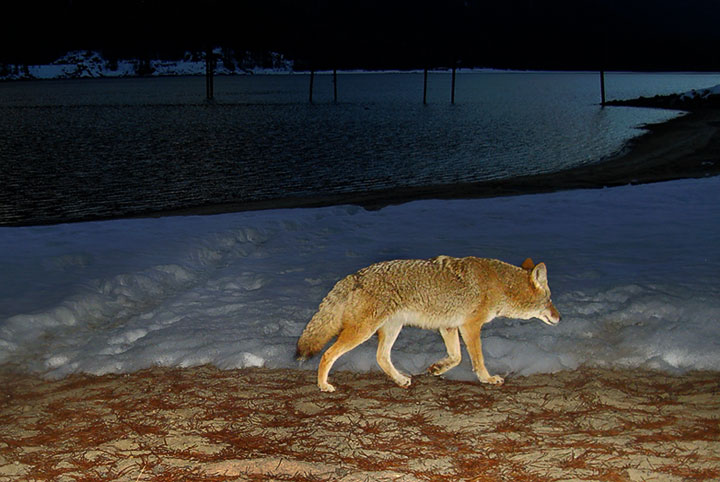 This late February picture shows our local coyote doing its occasional rounds along the lakeshore. The trail across the snow behind it is well travelled: I have seen people, dogs, raccoons, deer and coyote on it. I find it striking that when a coyote is caught unaware, such as here, it always has its head down as if scouring for voles. Also, note the tip of the tail is turning from its normal black to white.
This late February picture shows our local coyote doing its occasional rounds along the lakeshore. The trail across the snow behind it is well travelled: I have seen people, dogs, raccoons, deer and coyote on it. I find it striking that when a coyote is caught unaware, such as here, it always has its head down as if scouring for voles. Also, note the tip of the tail is turning from its normal black to white.
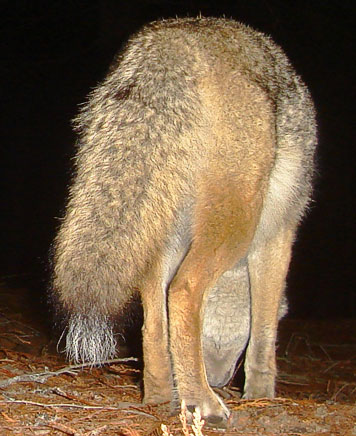 White tail: White hairs will grow in a previously pigmented area as a result of an injury: the new growth from damaged hair follicles is white. The injury may have arisen from another animal’s bite, but, more likely for the season, is that it is from frostbite. The tip is very sensitive even in an animal which would typically curl its tail around itself.
White tail: White hairs will grow in a previously pigmented area as a result of an injury: the new growth from damaged hair follicles is white. The injury may have arisen from another animal’s bite, but, more likely for the season, is that it is from frostbite. The tip is very sensitive even in an animal which would typically curl its tail around itself.
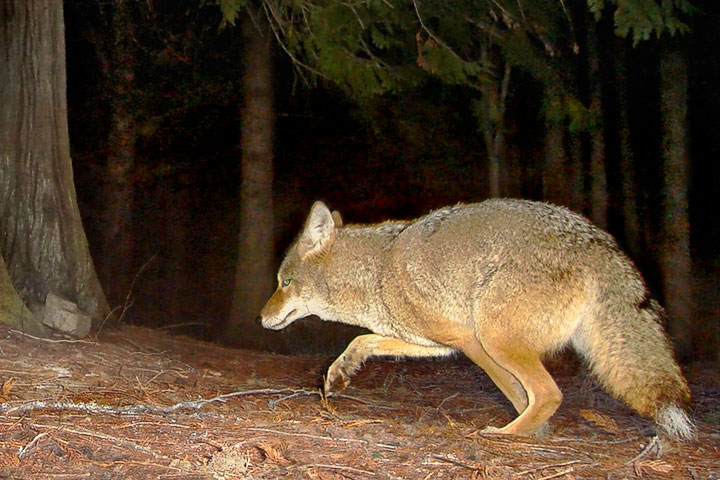 This Coyote is foraging in the woods at night. It is probably the same animal as the one just above but a couple of weeks later, but now the tail tip shows much more white
This Coyote is foraging in the woods at night. It is probably the same animal as the one just above but a couple of weeks later, but now the tail tip shows much more white
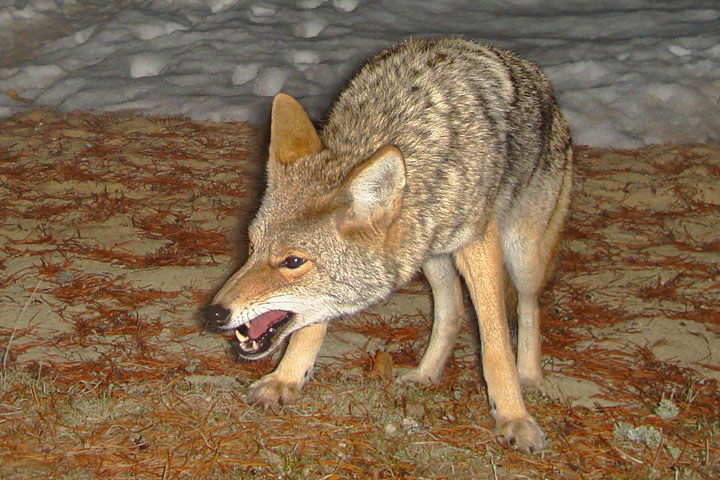 “Get out ah my face, raccoon, I am tougher than you are, so just back away and learn to deal with it!”
“Get out ah my face, raccoon, I am tougher than you are, so just back away and learn to deal with it!”
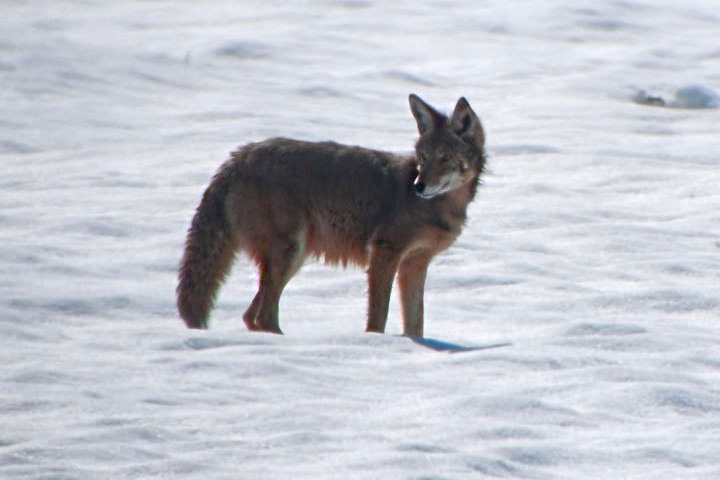 A coyote is hunting in a snow–covered field.
A coyote is hunting in a snow–covered field.
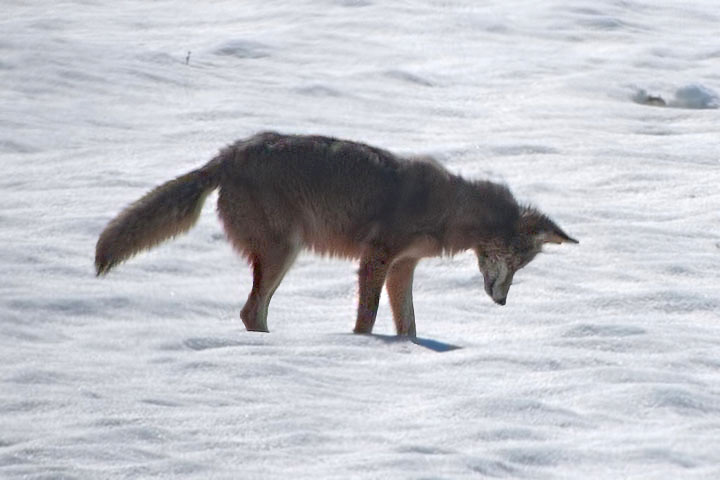 It listens intently for the sounds of voles under the snow.
It listens intently for the sounds of voles under the snow.
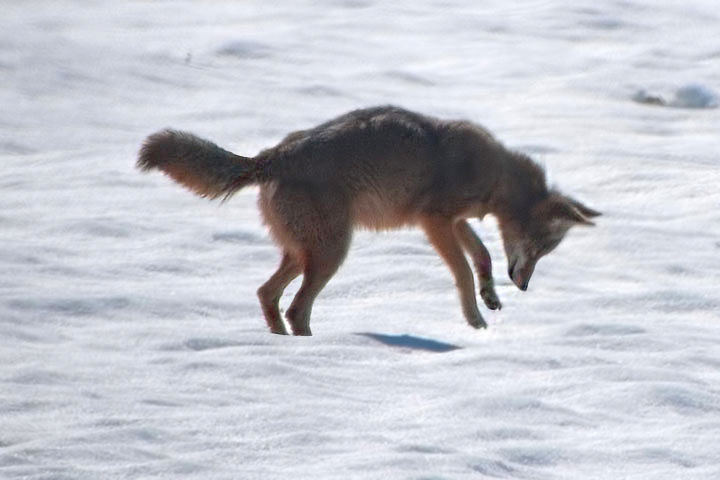 It pounces.
It pounces.
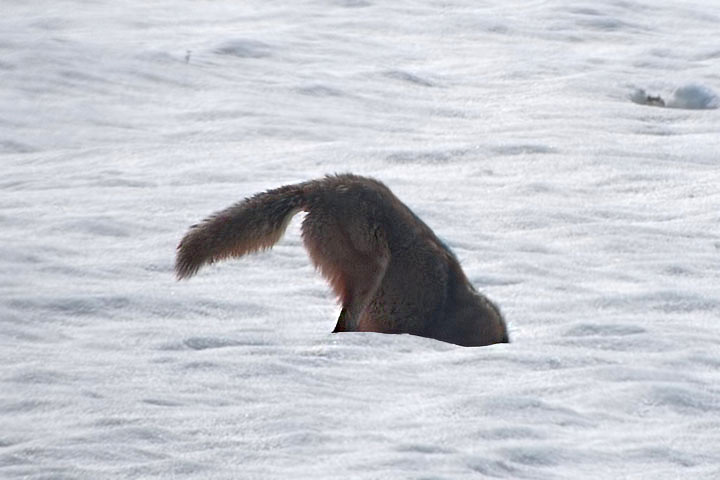 It digs down.
It digs down.
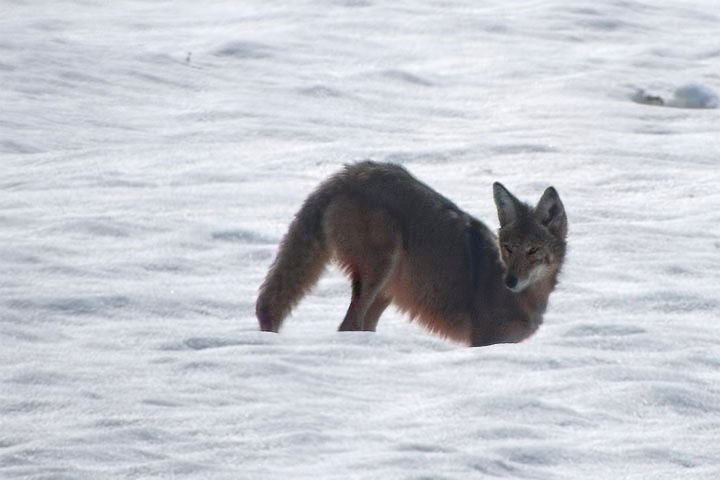 It comes up without having caught anything.
It comes up without having caught anything.
![]()